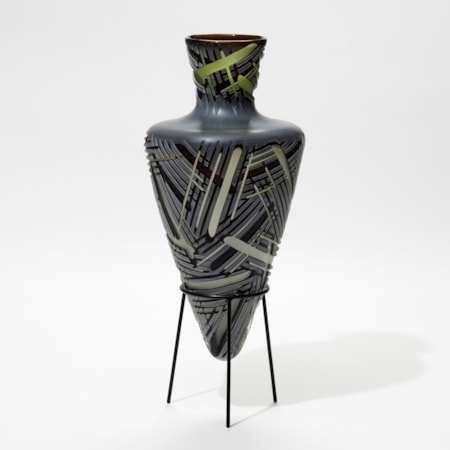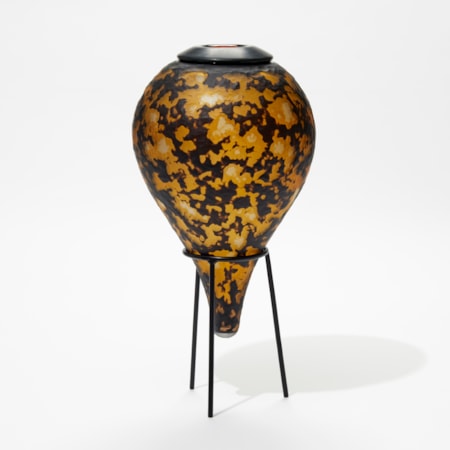The Harappans IV
Artist
Title
The Harappans IV
EDITION
Unique
dimensions
H 44 cm W 27 cm D 27 cm
Material
Handblown & sculpted glass with steel
price
POA
about
'The Harappans IV' is a unique artwork by the American and Swiss artists, Philip Baldwin and Monica Guggisberg.
Free blown, double overlay & carved glass with metal stand (which is included in the height).
The Harappans, circa 3300-1300 BCE, Indus Valley.
‘Why do we assume that people who have figured out a way for a large population to govern and support itself without temples, palaces and military fortifications – that is without overt displays of arrogance, self-abasement and cruelty – are somehow less complex than those who have not?’ David Graeber and David Wengrow, The Dawn of Everything: A New History of Humanity (2021)
In the artist’s own words;
*It was a single breathtaking photograph that led us to the Harappans. We hadn’t been looking for them per se, but were greatly impressed. So much so that they became the inspiration for this installation. Archaeologists had discovered the cities of Harappa and Mohenjo-daro in the Indus River Valley in 1922, just a century ago, and they inspired a serious rethink of the stock narrative informing our understanding of our past. The well-known civilizations to the west during the same period – Egypt, Sumer, Mesopotamia – were all classically hierarchical and authoritarian, and usually buttressed by a ritualised state religion. However, the evidence now suggests that such behaviours were far from universal, and many archaeologists believe the Harappan civilisation, as it became known, actually eschewed such tendencies. The findings show little sign of personal aggrandisement, and no evidence of charismatic authority figures, priests, kings or warrior nobility. Indeed, the Harappan culture appears to have been essentially egalitarian, mirroring so many of the Paleolithic (today indigenous) societies in preceding millennia.”
Free blown, double overlay & carved glass with metal stand (which is included in the height).
The Harappans, circa 3300-1300 BCE, Indus Valley.
‘Why do we assume that people who have figured out a way for a large population to govern and support itself without temples, palaces and military fortifications – that is without overt displays of arrogance, self-abasement and cruelty – are somehow less complex than those who have not?’ David Graeber and David Wengrow, The Dawn of Everything: A New History of Humanity (2021)
In the artist’s own words;
*It was a single breathtaking photograph that led us to the Harappans. We hadn’t been looking for them per se, but were greatly impressed. So much so that they became the inspiration for this installation. Archaeologists had discovered the cities of Harappa and Mohenjo-daro in the Indus River Valley in 1922, just a century ago, and they inspired a serious rethink of the stock narrative informing our understanding of our past. The well-known civilizations to the west during the same period – Egypt, Sumer, Mesopotamia – were all classically hierarchical and authoritarian, and usually buttressed by a ritualised state religion. However, the evidence now suggests that such behaviours were far from universal, and many archaeologists believe the Harappan civilisation, as it became known, actually eschewed such tendencies. The findings show little sign of personal aggrandisement, and no evidence of charismatic authority figures, priests, kings or warrior nobility. Indeed, the Harappan culture appears to have been essentially egalitarian, mirroring so many of the Paleolithic (today indigenous) societies in preceding millennia.”















